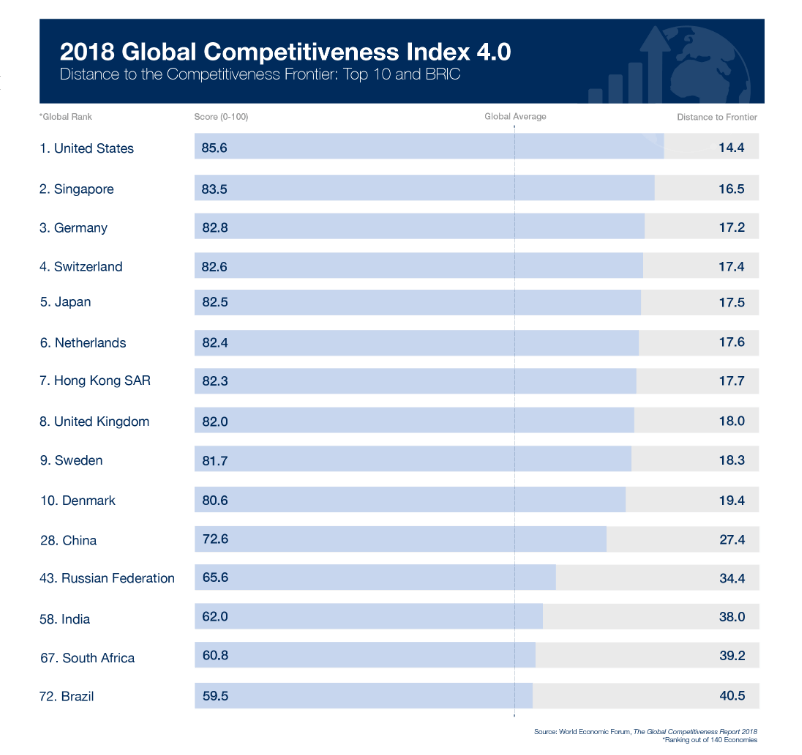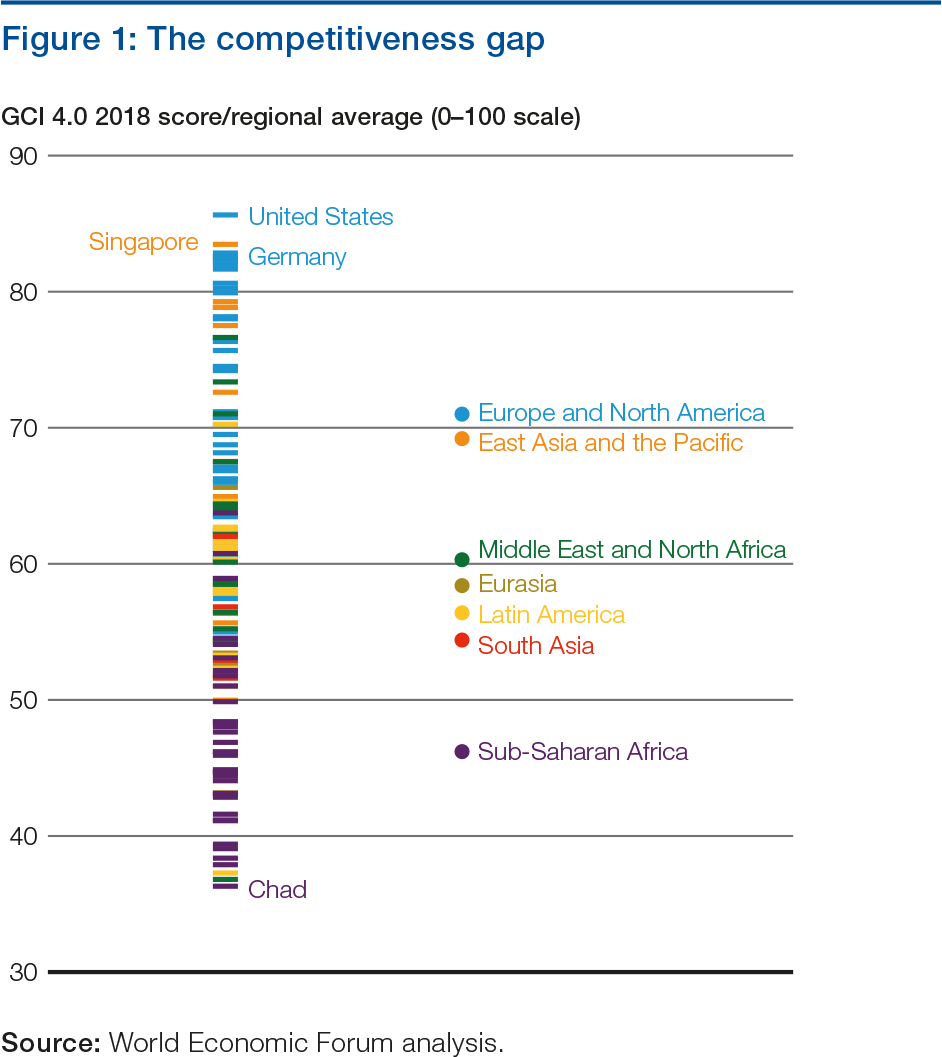Global competitiveness index of countries for 2018 showed that the US economy is closer to the "ideal state" than any other country. On a scale from 0 to 100, America scored 85.6, followed by Singapore (83.5), Germany (82.8), Switzerland (82.6) and Japan (82.5) last year's leader ...
By competitiveness, the authors of the report presented at the World Economic Forum (WEF) understand the ability of a country to maintain high incomes, maintain a balance of socio-economic conditions and maintain satisfaction with the lives of citizens.
This is what the top 10 most competitive countries of 2018 look like

Why America has become the most globally competitive country in the world
WEF identifies three aspects of US superiority among 140 economies in the world. These are the size of the market, the innovation ecosystem (including the entrepreneurial culture, its openness and flexibility) and stability.
However, it is too early for the United States to rest on its laurels. According to the WEF, America lags behind other advanced economies in terms of public health. Currently, the average age of survival in the country is 67.7 years. Security is also deteriorating, with homicides five times the average for other advanced economies. Moreover, the United States ranks 40th in terms of checks and balances, 15th in terms of judicial independence and 16th in terms of corruption.
But if we consider innovation, then the American economy is very strong.“Innovation has become a critical precondition for all advanced economies and is a priority for a growing number of developing countries. Already the vast majority are struggling to make innovation an important engine of growth. ", - write the authors of the report. "The results show that there are only a handful of innovative heavyweights in the world, including Germany, the United States and Switzerland."
Russia's place in the global competitiveness rating of the countries of the world

The Russian Federation is ranked 43rd in the list of the most competitive countries. She scored 65.6 points out of a hundred, and immediately jumped two lines up in comparison with 2017. The growth prospects of the Russian economy are 1.7% this year, the highest in five years.
The WEF experts explain the improvement of Russia's indicators by the stabilization of conditions for macroeconomic development, favorable circumstances for innovative development and the introduction of new information technologies into the everyday life of the country's citizens.
And the weaknesses of the Russian Federation are the financial and consumer markets, as well as healthcare. By the level of development, they are in 86, 83 and 100 places, respectively.For one of the 12 key “pillars” - namely institutions - Russia scored only 52.7 points, being in 72nd place on the list.
The most uncompetitive country in the world
Regionally, sub-Saharan Africa has the highest concentration of the world's most inefficient economies. Eight of the 10 least competitive countries are located in this region.
And the most non-competitive state in 2018 is Chad (140th place, 35.5 points out of 100 possible). Yemen is in second place from the end (36.4 points), and the top three outsiders in Haiti (36.5 points).
 Why does global competitiveness matter? The authors of the report believe that it contributes to improving living standards and creates the resources necessary to achieve a wide range of social goals.
Why does global competitiveness matter? The authors of the report believe that it contributes to improving living standards and creates the resources necessary to achieve a wide range of social goals.
Methodology for creating the Global Competitiveness Index
In 2018, WEF experts used a new methodology to create their annual report. This was necessary to reflect the shifts that have occurred in the world under the influence of the massive introduction of cyber-physical systems - the so-called Fourth Industrial Revolution.
The Index used 98 indicators and 12 “pillars” of competitiveness, based on which 140 countries were assessed by:
- the quality of their institutions;
- infrastructure;
- the introduction of information and communication technologies;
- macroeconomic stability;
- public health;
- higher education and vocational training;
- consumer market;
- the labor market;
- financial system;
- the size of the domestic market;
- business development dynamics;
- innovative potential.
For each pillar, a scale from 0 to 100 was used. The more points a country scored, the closer its economy is to the ideal state or “frontier” of competitiveness.

